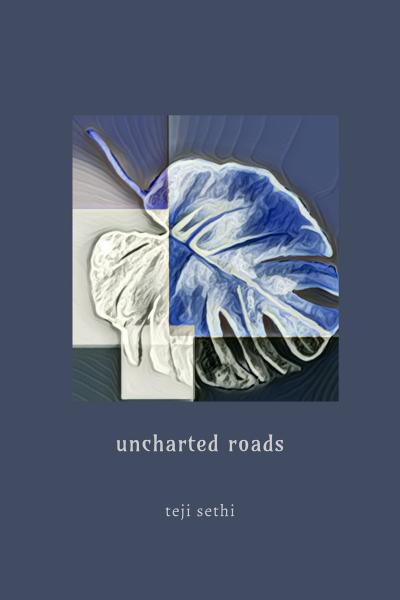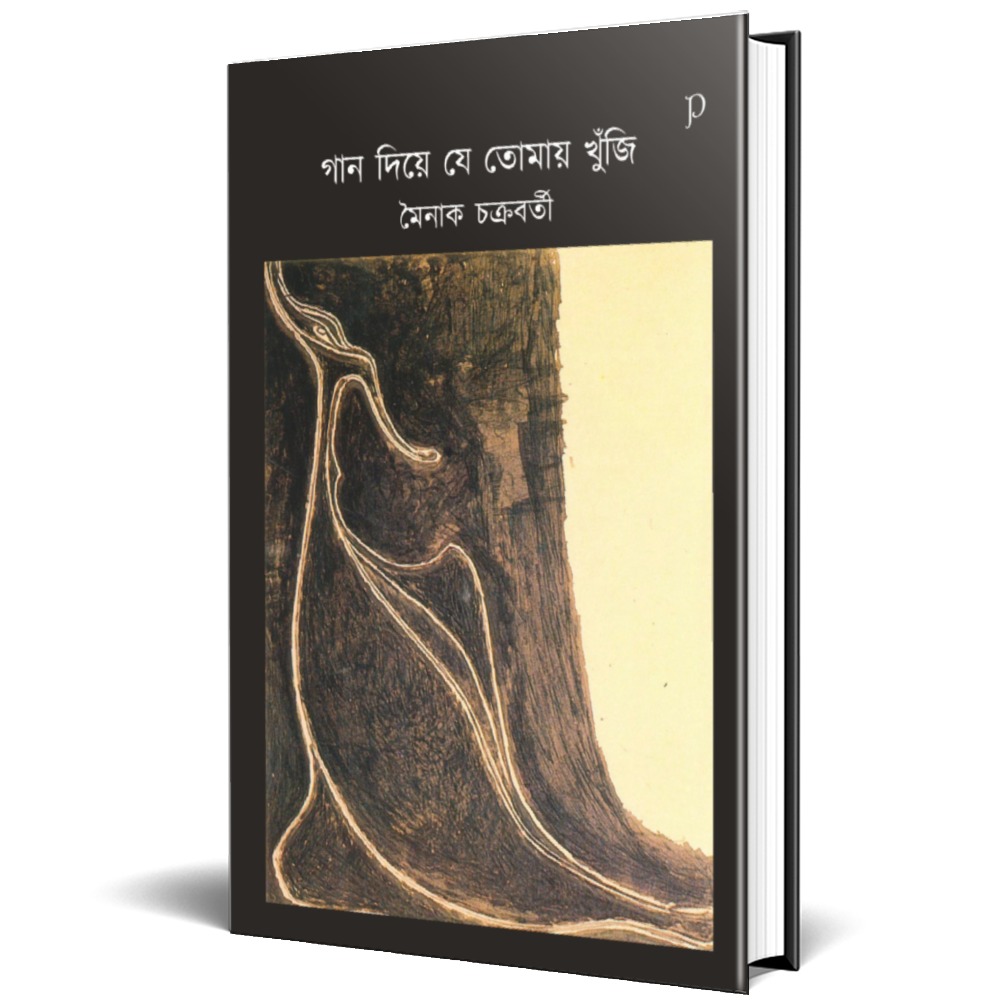Music in the everyday : Neera Kashyap Reviews Uncharted Roads by Teji Sethi
Neera Kashyap is a poet, writer of short fiction and a book reviewer. Her book reviews have appeared in Café Dissensus, Kitaab and The Bangalore Review.
Neera Kashyap
Title: Uncharted Roads, January 2021
Genre: Poetry
Author: Teji Sethi
Publisher: Notion Press
ISBN: 9781637818824
Price: Rs 150
Page Count: 48
From her book of haikai, ‘Uncharted Roads’, we learn of how the author, Teji Sethi stumbled upon her journey into haikai literature. Her daughter Ustat, was mentored in this genre of poetry at the Katha Festival – National Writers’ Workshop by Kala Ramesh, a renowned haijin, editor, curator and the founder of INhaiku – The Indian Haiku Fraternity. Reading the haiku verses from Ramesh’s collection, ‘Beyond the horizon, beyond’, Sethi was transported to the couplets of the Sufi poets. It is thus through her daughter and Ramesh that Sethi saw what she needed to learn. Soon after, she joined Triveni, the haiku group, and enrolled herself in the haiku and tanka workshop mentored by Ramesh.
Sethi’s rendezvous with poetry began much earlier. As a child, her father would recite and translate for her the hymns, dohas and slokas of Kabir, Ravidaas, Surdaas and Baba Farid. Even in those childhood years she could respond to their beauty and depth of thought, and understood them to speak of the Ultimate Truth of life. This book begins with a verse from Guru Nanak in Punjabi conjoining the universal with the individual in the words: ‘Nanak says that the true aarti is the lighting of heart’s candles’. In keeping with her gratitude for discovering her path, she offers her first published tanka to the divine and to her haijin guru, Kala Ramesh:
the sun rises above
the horizon my guru
teaches me
to look
and look beyond
Under the Basho, July 2020
A nutritionist by profession, Teji transitioned from micronutrients to micro poetry, finding her forte in bilingual poetry: Hindi and English. Her poems in free-verse, haikai verse and works of art have found a home in numerous national and international anthologies and journals: The Kolkata Review, Under the Basho, Drifting Sands, Moonbathing, FemkuMag, Humankind Journal, The Haiku Foundation, Ribbons, to name a few. Her debut collection of Hindi poems, 'Cotton Blooms - Kapaas Ke Phool' was published in 2019, The Partition Museum of India awarding one of its creations. This literary piece was later translated into Punjabi and broadcast over Radio Pakistan, Lahore. Her first bi-lingual anthology of poems titled 'I Am Not Enough to Know’as Editor, is scheduled to be in print in 2021. As an artist, she does artworks and illustrations for her poems and books, and for other anthologies as well.
‘Uncharted roads’ comprises an ensemble of haiku, senryu, tanka, tanka prose and haibun published in various Indian and international journals in the year 2020.
A poet at heart, Sethi is charmed by the musicality of Nature and believes in the power of narrative. Her introductory haiku set the tone for the book, dealing as they do with death, renewal and the thirst of longing. Finally, it is death that sails:
his last trip
on the waters of the Ganges – floating
urn
Akin to death and striking in the image of the stillborn is this haiku:
still born –
a leafless twig
clings to me
Though Sethi writes that she ‘loves concocting a mix of emotions through her short verses’, the power and beauty of her verses lie both in the freedom with which she expresses herself and the restraint with which she harnesses her words. This is especially evident in the moods she invokes of nostalgia and of an irretrievable past. In the haibun, ‘The road not taken’, it is the tanka that hints at an amalgam of nature and the past: ‘a beam of moonlight/ sieves through the window/ the mesh of relationships I/ have lived through all these years’.
In the haibun ‘Holding on to’ there is an exquisite use of the senses that invoke both memory and pleasure through the simple image of the grapefruit. In this she writes of her grandfather who was very fond of a grapefruit tree, the early winter fruit of which he christened ‘Red Ruby’. When they moved to India after Partition, he missed that tree so much that he asked one of his old neighbours in Lahore to send him its picture. As a girl, she would swirl the juice of grapefruit mixed with other citrus fruits in her mouth, letting its pulp play with her tongue. After forty years, the poet walks into her kitchen garden, stand nears a grapefruit tree, caresses the skin of the large, mellow fruit. The aroma tells her that it is perfectly ripe to be bottled. As she slices open a fruit, some juice squirts out, leaving a trail of tiny droplets on the granite. It is the tanka at the end that captures the essence of how sensory perceptions transform into perceptions of nature, the past still living in the moment.
morning dew shines on the grass
the moment
I live in
will soon be gone
What does freedom mean to the poet? There is the freedom that we all seek, evident in Sethi’s haiku:
breaking free of
all the moulds – a
puppet in me
Then there is the freedom of relief that comes from hiding our blemishes – amavasya or the moonless night signals the freedom to hide our flaws, just as, in the natural order of things, darkness hides the moon. Sethi hints at this:
amavasya - my
scars eclipsed
for a night
This haiku reminds one of another splendid verse by noted haijin, Shloka Shankar when she writes:
three-quarters moon...
the missing pieces
of my life
--Indian Kukai from INhaiku, Sept, 2014
In providing a hint of the layers of meaning that can be imparted to a single concept, it is not surprising that Sethi’s work has been selected for special comments from Editors.
For this haiku below which hints at an observation on life, Sethi received the comments that follow from the journal Editor:
an aged banyan
roots as deep as
beliefs
Editor Kelly Sauvage Angel writes: “This haiku by Sethi humbles me. Not only does it offer an extremely resonant juxtaposition, but its depth and complexity continue to unfold in a manner that propels one into the most expansive of realms, the spiritual, while remaining utterly free of the tethers of religious dogma….. Perhaps the ‘aged banyan’ is an older member of the poet’s community or an allusion to the depth of our collective failings—or our mythic potential.”
For the tanka below, the Editor of Femku Mag also provides a tender commentary:
as I take
her hands into mine, petal
by petal
a bud unfurls ... daughter's
first periods
Editor: “In this tanka, Teji Sethi gently and gradually describes a girl’s coming of age. She describes the coming of age to be a gentle, slow process – almost like the unfurling of a bud. As a poet, Teji clearly has the eyes of an artist who can observe the slightest bit of art in nature, and create poetry out of it. I have observed poetry where the poet tends to bring out a bit of herself, or a bit of her personality in her work, and Teji has done that too. She has unknowingly brought out her soft, maternal side in her work, enabling us to get to know her as a person as well.”
Because Sethi’s work has the depth and capacity to raise different meanings, this reviewer too could give varied interpretations to this haiku:
sickle moon – my
wait lingers
at the window
Does she wait for the ebb and flow of joy and sorrow to cease, or is it just her menstrual cycle as indicated by the sickle moon? She lingers – does she not want the changing tides to end? For the end could mean the end of things both youthful and fertile, the beginning of withdrawal as dualities ebb, signalling greater inwardness?
True to her love of the musical, there is much musicality in the everyday in Sethi’s haikai. Even as dawn is the ambrosial hour when enlightened souls taste the nectar of a new day, it is also present in the first cup of tea:
early morning –
the sun melts
into my cup
sunset serenade – music
lingers
even after he leaves
A joy is also present in the seasons of Punjab: the season of sesame is linked to sparrows gathering seeds; jaggery to a winter sun and to sticky fingers; Lohri to the popping of corn in the fire; peanuts to shelling nuts in togetherness, shedding grievances in the process. While most of Sethi’s haikai relate to human emotions, she is able to weave her quality of refined restraint even into the sociological, making an important observation, for example, on the loss of the personal in activism for a cause:
a crusader of child
rights my friend tends
to ignore bruises her
daughter carries
This small collection of haikai literature has been a delight to read. Perhaps this delight is best expressed in the words of Kala Ramesh, Sethi’s haijin guru who writes: “What a pleasure it was – each poem, each page unfolding the woman in you. You are a poet to the core and not just a poet but a kalakaar in every sense this beautiful word evokes.”











Comments